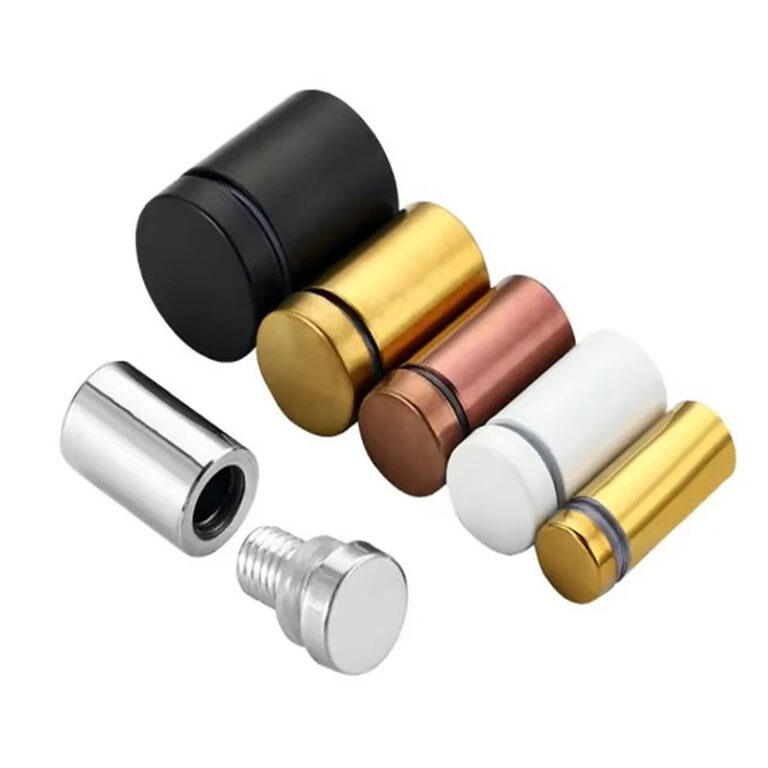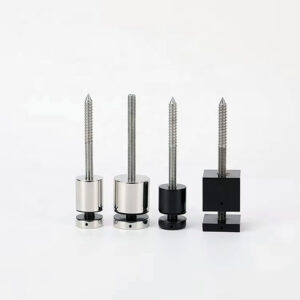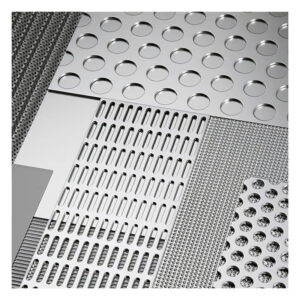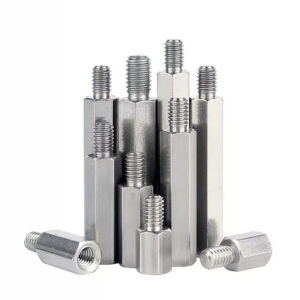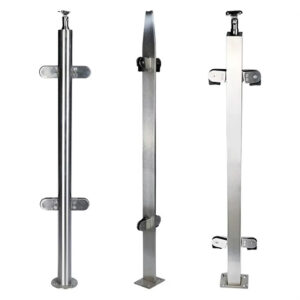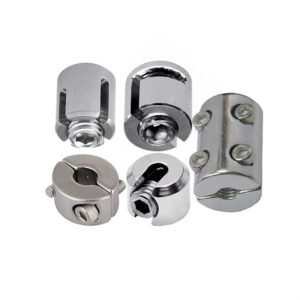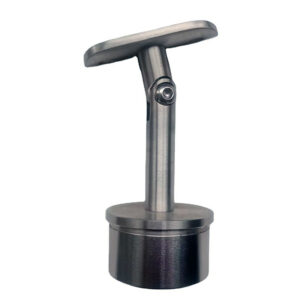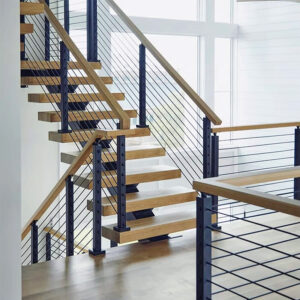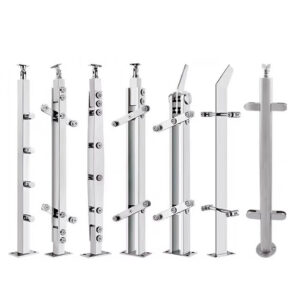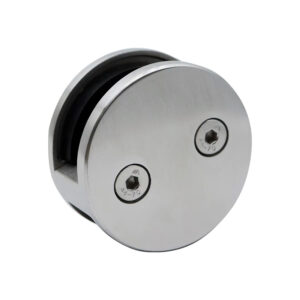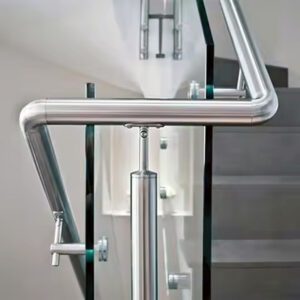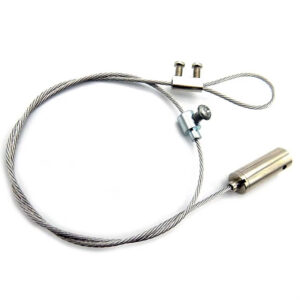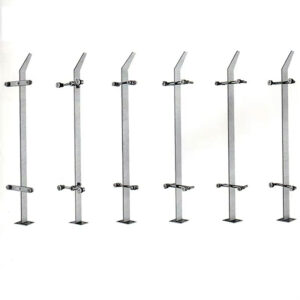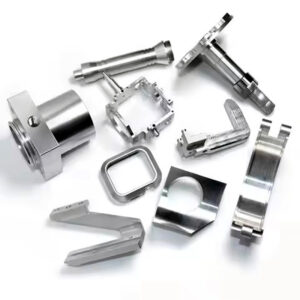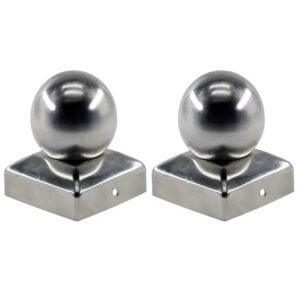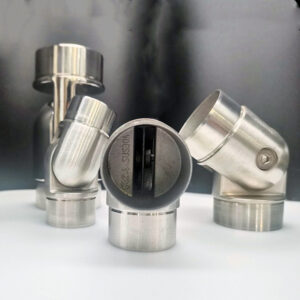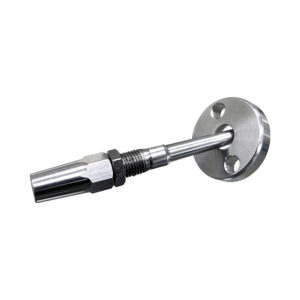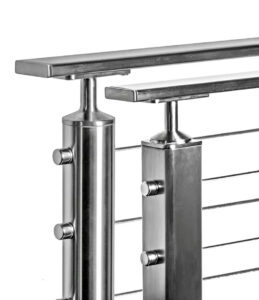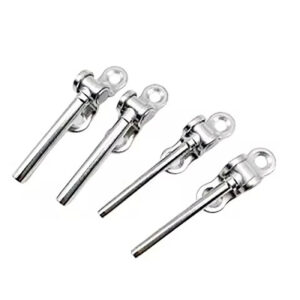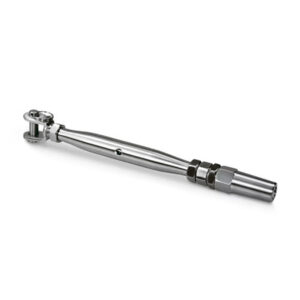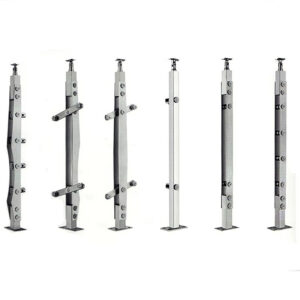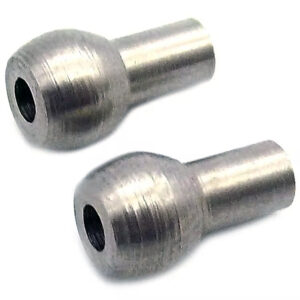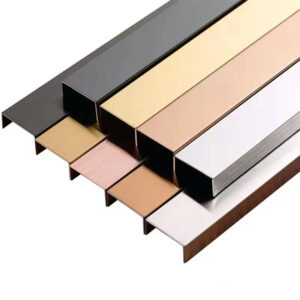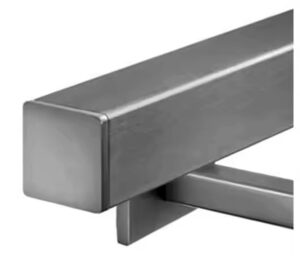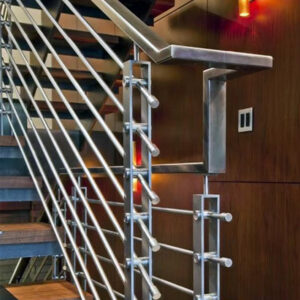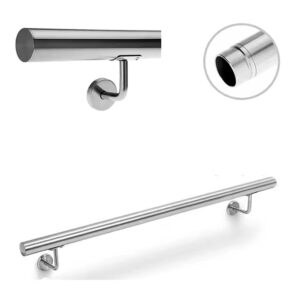Finding glass mounting adapters that actually perform as specified isn’t just about picking parts from a catalog. After 23 years manufacturing stainless steel hardware, we’ve learned that reliable glass mounting systems require precision engineering, proper material selection, and components designed to work together seamlessly. The difference between adapters that hold and those that fail often comes down to understanding real-world installation conditions and long-term performance requirements.
Glass Mounting Adapters: Essential Components for Modern Railing Systems
Spigot and Base Shoe Systems
Glass spigots form the foundation of effective glass mounting adapter systems. Our 316L stainless steel spigots handle structural loads while providing clean visual lines. Standard diameters from 48mm to 60mm accommodate most glass thicknesses from 10mm to 19mm. The precision-machined surfaces ensure consistent glass seating and eliminate stress concentration points that cause failures.
Base shoe adapters complement spigot systems by distributing loads across mounting surfaces. Cast 316 stainless construction provides superior strength compared to fabricated alternatives. Integrated gasket channels maintain weatherproof seals without additional sealant applications. This combination reduces installation time while improving long-term reliability.
Clamp and Bracket Configurations
Glass adapter fabrication 316L marine grade components excel in coastal and high-corrosion environments. Our continuous clamp systems secure glass panels along their full edge length, distributing wind loads effectively. Adjustable mounting brackets accommodate construction tolerances from 5mm to 15mm without field modifications.
Point-fixed glass connectors offer installation flexibility where continuous support isn’t practical. Precision-machined holes and gasket systems maintain structural integrity while allowing thermal movement. Load ratings up to 2.5kN per connection point meet most commercial applications when properly spaced.
Custom Glass Adapter Components
ODM glass mounting adapter manufacturing capabilities address unique project requirements. Our engineering team develops custom solutions for challenging geometries, special load conditions, and integration with existing structures. Twenty-three years of experience means we understand which modifications work and which create problems.
Standard modification options include:
- Custom hole patterns for specific glass layouts
- Modified angles for curved or angled installations
- Extended brackets for unusual mounting conditions
- Special surface treatments for aesthetic requirements
- Load-rated assemblies for high-wind applications
| Adapter Type | Load Rating | Glass Thickness | Installation Time | Best Application |
|---|---|---|---|---|
| Base Spigot | 2.0kN lateral | 10-19mm | 15 min/unit | Perimeter barriers |
| Continuous Clamp | 3.5kN/meter | 12-21mm | 8 min/meter | Commercial facades |
| Point Connector | 2.5kN per point | 10-19mm | 12 min/point | Structural glazing |
| Adjustable Bracket | 2.8kN lateral | 12-21mm | 20 min/unit | Retrofit projects |
Material Performance in Real Applications
Marine Grade Mounting Adapters
Coastal installations demand marine grade mounting adapters with proven corrosion resistance. Our 316L stainless steel provides superior performance compared to 304 grades in salt environments. Independent testing shows less than 0.1mm corrosion penetration after 10 years of coastal exposure.
“Marine-grade stainless components show 5x better corrosion resistance in salt spray testing compared to standard 304 stainless.” —Stainless Steel Industry Association
Proper alloy selection prevents galvanic corrosion when adapters contact aluminum frames or dissimilar metals. Our technical team provides compatibility guidance based on specific project conditions and adjacent materials.
Load Performance and Safety Factors
Glass mounting systems must handle multiple load types: dead loads from glass weight, live loads from human contact, and environmental loads from wind pressure. Our adapters design meets IBC requirements with appropriate safety factors.
▶ Get Complete Load Specifications ◀
Standard safety factors:
- Dead loads: 5:1 minimum
- Live loads: 4:1 minimum
- Wind loads: 2.5:1 minimum
- Seismic loads: 1.5:1 minimum
| Load Condition | Design Load | Safety Factor | Typical Application |
|---|---|---|---|
| Pedestrian Contact | 0.75kN/m | 4:1 | Residential barriers |
| Commercial Traffic | 1.5kN/m | 4:1 | Office building railings |
| High Wind Exposure | 2.4kN/m² | 2.5:1 | Coastal installations |
| Seismic Zone 4 | Variable | 1.5:1 | West Coast projects |
Commercial Glass Adapter Systems in Practice
Office Building Applications
Commercial glass adapter systems require consistent performance across large installations. A recent 40-story office project used 2,400 mounting points across multiple floor levels. Standardized components reduced inventory complexity while maintaining design flexibility.
Installation productivity averaged 12 adapters per hour using standard tools. Modular design allowed different crews to work simultaneously without coordination delays. Total installation time: 200 hours versus 320 hours estimated for custom fabrication approaches.
“Standardized glass mounting hardware cut our installation schedule by 6 weeks on the downtown office project.” —Commercial Glazing Contractors Association
Retail and Public Spaces
High-traffic environments test adapter durability beyond standard specifications. Shopping centers, airports, and transit facilities subject glass mounting systems to constant vibration, impact, and cleaning cycles.
Our commercial systems handle these conditions through robust construction and proven connection methods. Field reports from municipal projects show minimal maintenance requirements over 5-year service periods. Replacement rates under 2% demonstrate long-term reliability.
▶ Discuss Your Commercial Project ◀
Industrial and Infrastructure Projects
Manufacturing facilities require glass mounting adapters that perform in challenging environments: temperature cycling, chemical exposure, vibration from equipment. Standard commercial hardware often fails within months.
Industrial-grade adapters use enhanced materials and construction methods. Viton gaskets replace standard EPDM for chemical resistance. Mechanical connections eliminate adhesive dependencies. Load ratings increase 40% to handle dynamic loading from nearby equipment.
Installation Support and Manufacturing Precision
Streamlined Installation Process
Twenty-three years of manufacturing experience taught us that installation efficiency starts with component precision. Our glass mounting adapters arrive ready for installation with pre-assembled gaskets, hardware, and clear marking for orientation.
Standard tool requirements:
- Impact driver with hex bits
- Torque wrench (calibrated)
- Diamond hole saw (where applicable)
- Standard measuring tools
- Safety equipment per OSHA requirements
Installation sequence documentation reduces field errors and ensures consistent results. Step-by-step guides include torque specifications, gasket placement, and quality checkpoints.
Quality Control in Manufacturing
Precision glass adapter manufacturing requires controlled processes and consistent materials. Our quality system includes incoming material verification, in-process dimensional checks, and final assembly testing.
Critical control points:
- Raw material chemistry verification
- Machining tolerance inspection (±0.05mm)
- Surface finish consistency
- Gasket material durability testing
- Assembly fit verification
▶ Talk to Our Manufacturing Engineers ◀
| Manufacturing Stage | Quality Check | Specification | Rejection Rate |
|---|---|---|---|
| Material Receipt | Chemistry analysis | ASTM A276 Grade 316L | <0.5% |
| Machining | Dimensional inspection | ±0.05mm tolerance | <1.2% |
| Surface Treatment | Finish consistency | 32 Ra maximum | <0.8% |
| Final Assembly | Fit and function test | Zero defects | <0.3% |
Selection Guide: Matching Adapters to Applications
Environmental Considerations
Glass mounting adapter selection starts with environmental assessment. Coastal projects require 316L stainless minimum. Urban environments with moderate pollution handle 304 stainless adequately. Industrial locations need chemical compatibility evaluation.
Temperature cycling affects adapter performance through thermal expansion differences between glass and metal. Our expansion joint designs accommodate movement without compromising structural integrity. Standard systems handle ±30°C temperature range confidently.
Load Requirements and Code Compliance
Building codes specify minimum loads, but actual conditions often exceed these values. Wind tunnel data from tall buildings shows pressure variations up to 150% above code minimums. Conservative adapter selection prevents field failures and costly retrofits.
“Real-world loads frequently exceed code minimums by 25-40% due to local wind conditions and building interactions.” —Structural Engineering Institute
Seismic requirements add complexity through dynamic loading and displacement compatibility. Our mounting systems accommodate inter-story drift up to 0.02h without glass damage or connection failure.
Custom vs. Standard Solutions
Standard glass adapter components handle 80% of typical applications efficiently. Custom solutions become cost-effective when quantities exceed 100 pieces or when standard options require extensive field modifications.
Custom development timeline: 2-3 weeks for design, 1 week for prototyping, 4-6 weeks for production tooling. Standard modifications often deliver better value than complete custom designs.
Frequently Asked Questions
What glass thicknesses work with standard mounting adapters?
Standard systems accommodate 10mm to 21mm glass thicknesses. Laminated glass requires gasket modifications for proper sealing. Tempered glass edges need specific gasket durometers to prevent stress concentrations.
How do marine environments affect adapter material selection?
Salt air exposure requires 316L stainless steel minimum. Regular 316 grade performs adequately for inland projects. Gasket materials need UV and ozone resistance for long-term performance. Esang Metal provides specific recommendations based on project location and exposure conditions.
What installation tools are required for glass mounting systems?
Standard tools include impact drivers, torque wrenches, and measuring equipment. Specialized glass handling equipment improves safety and efficiency. Most installations require two-person crews for safe glass positioning and adapter alignment.
How do custom glass adapter components affect project timelines?
Standard modifications add 2-3 weeks to delivery. Complete custom designs require 6-8 weeks including prototyping and testing. Early engineering consultation identifies standard solutions that meet custom requirements.
What maintenance schedules apply to glass mounting hardware?
Annual inspection of gaskets and hardware torque values. Coastal installations need semi-annual cleaning and inspection. Replacement gaskets typically last 7-10 years in normal service. Hardware replacement intervals exceed 15 years with proper maintenance.
How do building codes affect glass adapter specifications?
IBC, ASCE 7, and local amendments specify minimum loads and safety factors. Seismic zones require special displacement compatibility. Our technical team provides code compliance verification for specific project locations and building types.
Technical Support That Works
Twenty-three years in the glass mounting adapter business means we understand installation challenges and system integration requirements. Our engineering team provides design assistance, load calculations, and troubleshooting support throughout project lifecycles.
Technical services include:
- Load analysis for specific applications
- Material selection for environmental conditions
- Installation sequence planning
- Field problem resolution
- Long-term maintenance recommendations
▶ Connect with Our Technical Team ◀
Glass mounting systems succeed through proper component selection, precision manufacturing, and installation support. Understanding real performance requirements and matching them with appropriate hardware creates reliable systems that perform as designed. Our experience solving complex mounting challenges helps contractors and engineers specify systems that work efficiently and last.
